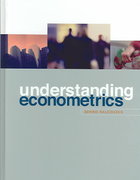Question
Q1. Use the labor/leisure model to analyze the effect on hours of work of a law requiring employers to pay time-and-one-half for hours worked over
Q1. Use the labor/leisure model to analyze the effect on hours of work of a law requiring employers to pay time-and-one-half for hours worked over 40 per week. (Assume that each worker has a total of 80 hours per week they could spend on Leisure or Work.)
(a) Draw a budget constraint for a person earning $5.00 per hour, and receives $100 a week in non-labor income. What happens to the budget constraint with the time-and-one-half requirement?
(b) Suppose this person was working 40 hours before the requirement. Show this by drawing an appropriate indifference curve. What happens to hours of work as a result of the overtime law? Illustrate with an indifference curve.
(c) In words, define the income and the substitution effect. Use the graph to identify the income and substitution effects. Which is stronger?
(d) If the wage had been increased for all hours worked rather than just for those after 40 per week, would the change in hours of work be any different? Show this in the graph and explain.
Step by Step Solution
There are 3 Steps involved in it
Step: 1

Get Instant Access to Expert-Tailored Solutions
See step-by-step solutions with expert insights and AI powered tools for academic success
Step: 2

Step: 3

Ace Your Homework with AI
Get the answers you need in no time with our AI-driven, step-by-step assistance
Get Started


